For the purpose of the Regional Competitiveness Report, the data presented for the Tampa Bay region reflects the eight counties of Citrus, Hernando, Hillsborough, Manatee, Pasco, Pinellas, Polk and Sarasota.
Our Region
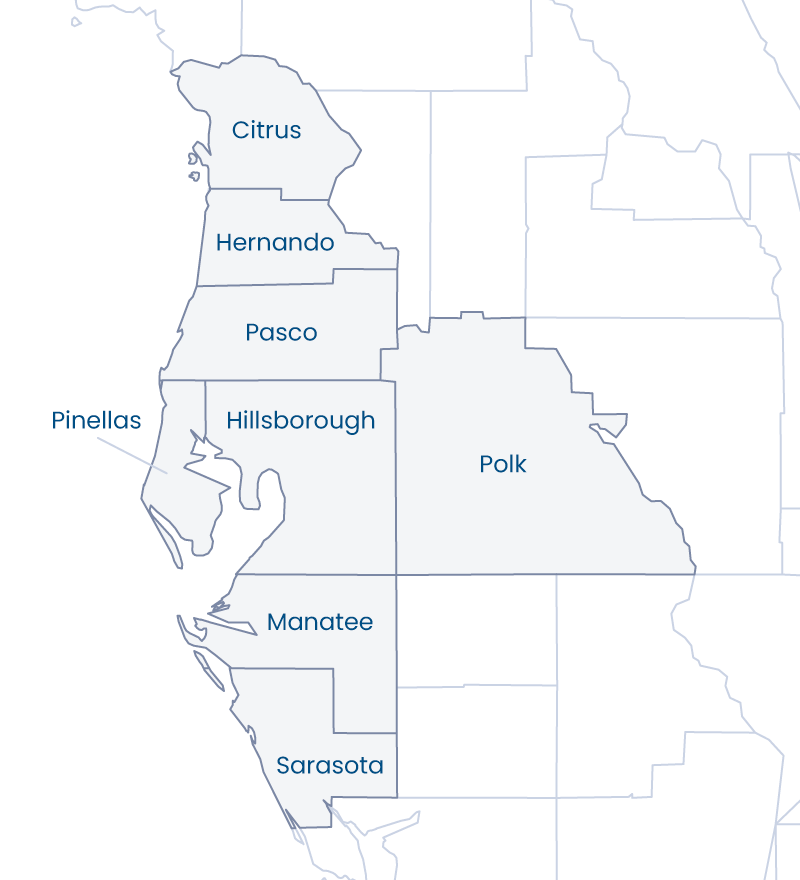
GEOGRAPHY
The Tampa Bay region is comprised of four Metropolitan Statistical Areas (MSAs) including: Tampa-St. Petersburg-Clearwater (Hernando, Hillsborough, Pasco and Pinellas), the 18th largest metro area in the country; Homosassa Springs (Citrus); Lakeland-Winter Haven (Polk); and North Port-Sarasota-Bradenton (Manatee and Sarasota). In instances where we combine county-level data, or MSA-level data, to create a regional value, we do so by weighting the component values by an appropriate factor (population, number of households, etc.). It should be noted that, in most instances, the Tampa Bay regional value remains close to the value of the Tampa-St. Petersburg-Clearwater MSA.
Population
Nearly 5 million people call the Tampa Bay region home. After welcoming over 740,000 new residents since 2010 (a 17.5% increase), rapid population growth is projected over the next five years, as Tampa Bay is expected to grow at nearly twice the rate of the country as a whole. By 2026, Tampa Bay’s population is estimated to reach more than 5.3 million people. In the coming years, Manatee County is expected to have the fastest population growth rate (10.3 percent) and Pinellas County the slowest (3.3 percent).
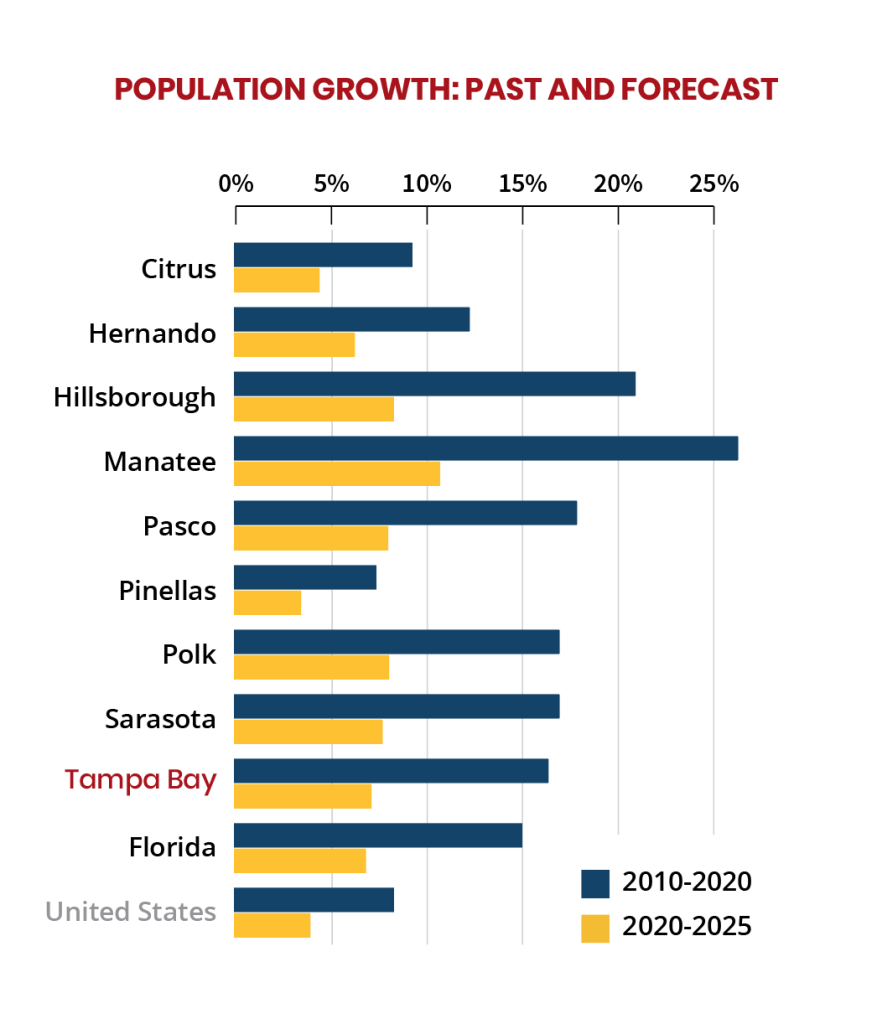
ESRI Business Analyst, 2021
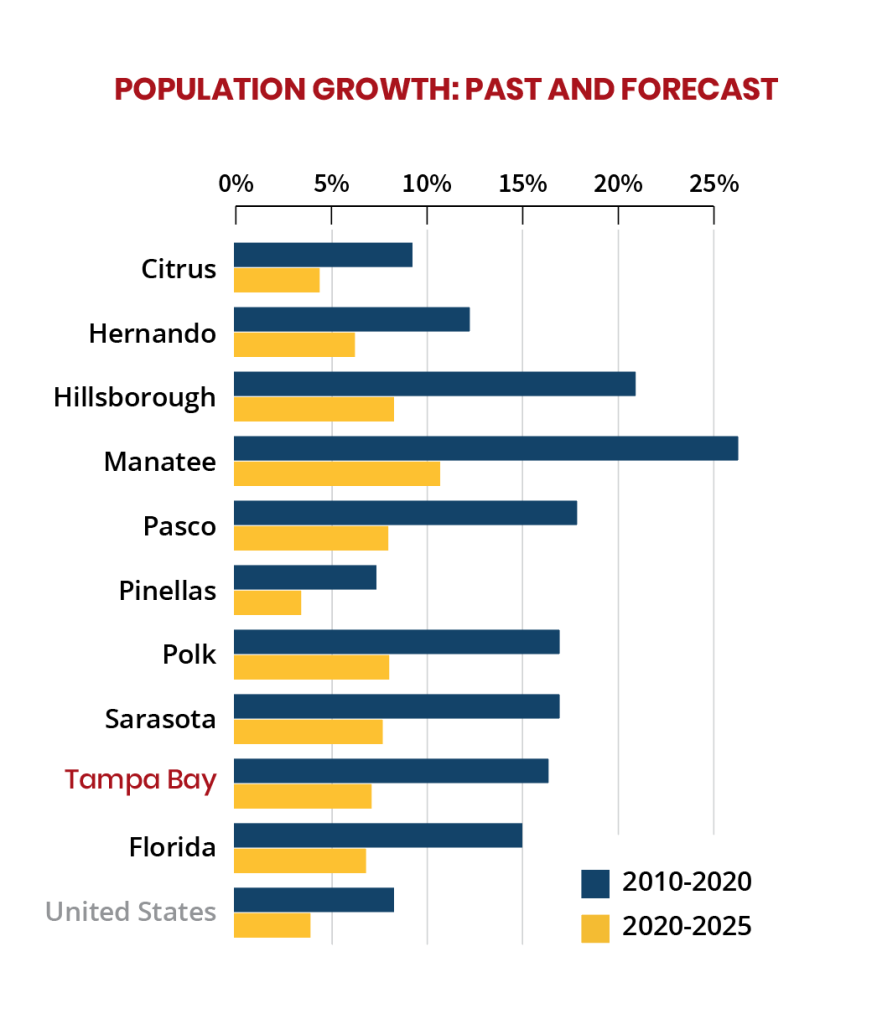
ESRI Business Analyst, 2021
Diversity
Diversity is typically described in terms of race (Black, White, etc.) and ethnicity (Hispanic or non-Hispanic), and multiple combinations of race and ethnicity exist. Overall, the region’s population by share of race is generally less diverse than both the state and the nation as a whole. At 20.5 percent, Tampa Bay’s Hispanic population is closer to the U.S. average (18.9 percent) than Florida’s (27.4 percent). Hillsborough is the region’s most diverse county, and Citrus is the least.
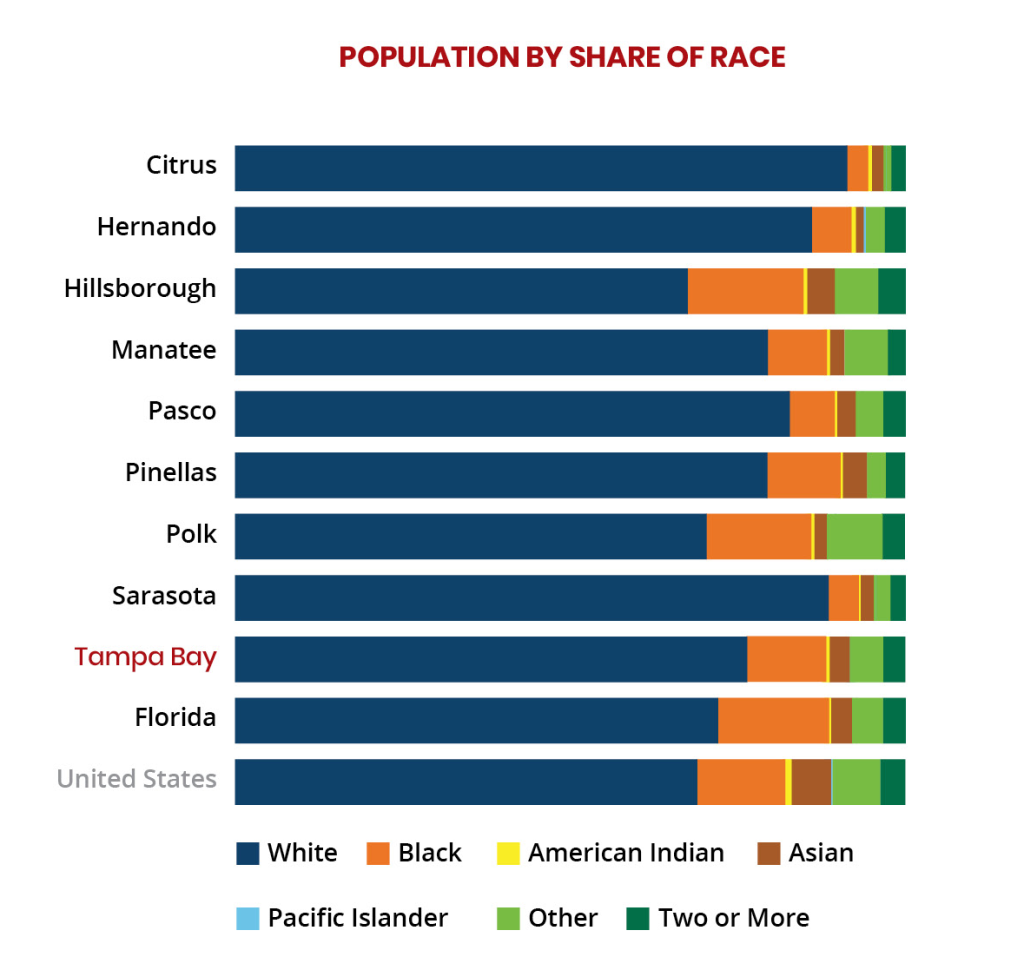
ESRI Business Analyst, 2021
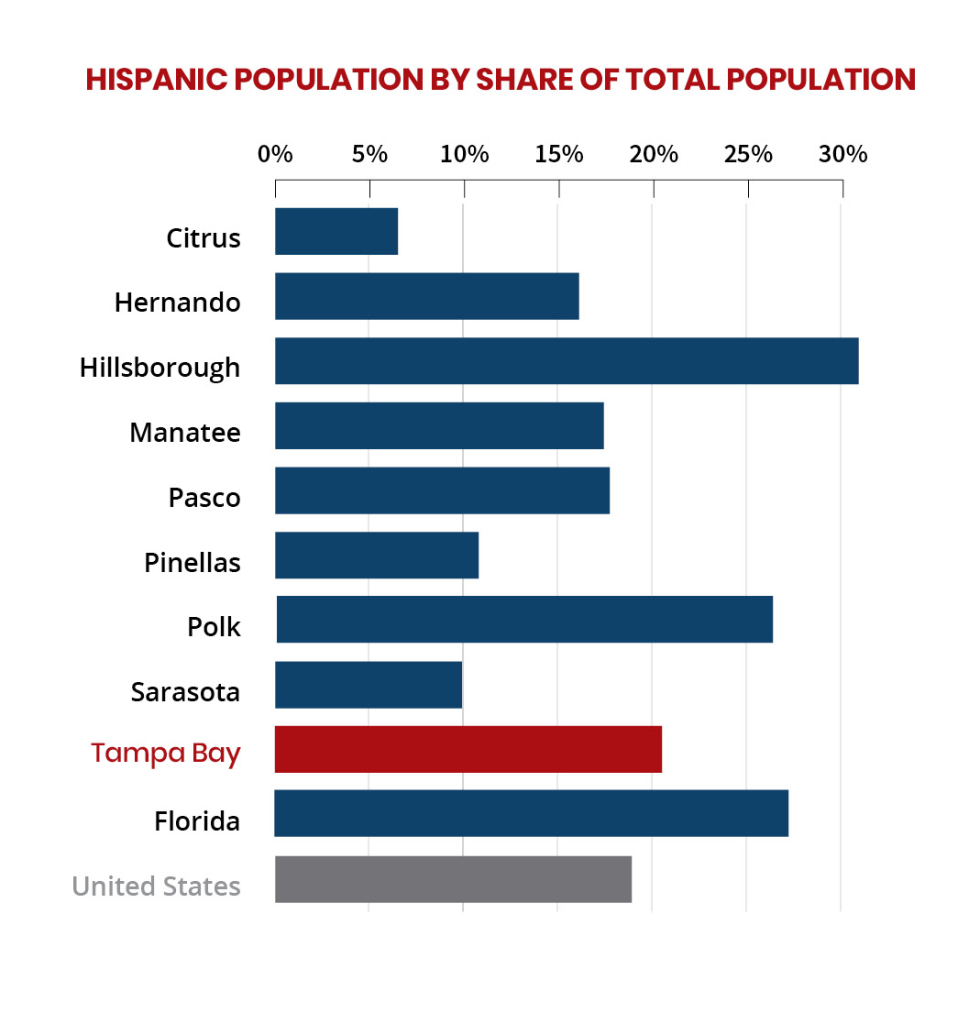
ESRI Business Analyst, 2021
Age
With a median age of 45.2, the residents of Tampa Bay are older than those in Florida (42.8) and the U.S. (38.8). Hillsborough County reports the lowest median age in the region (37.6) and Citrus County the highest (58.8).
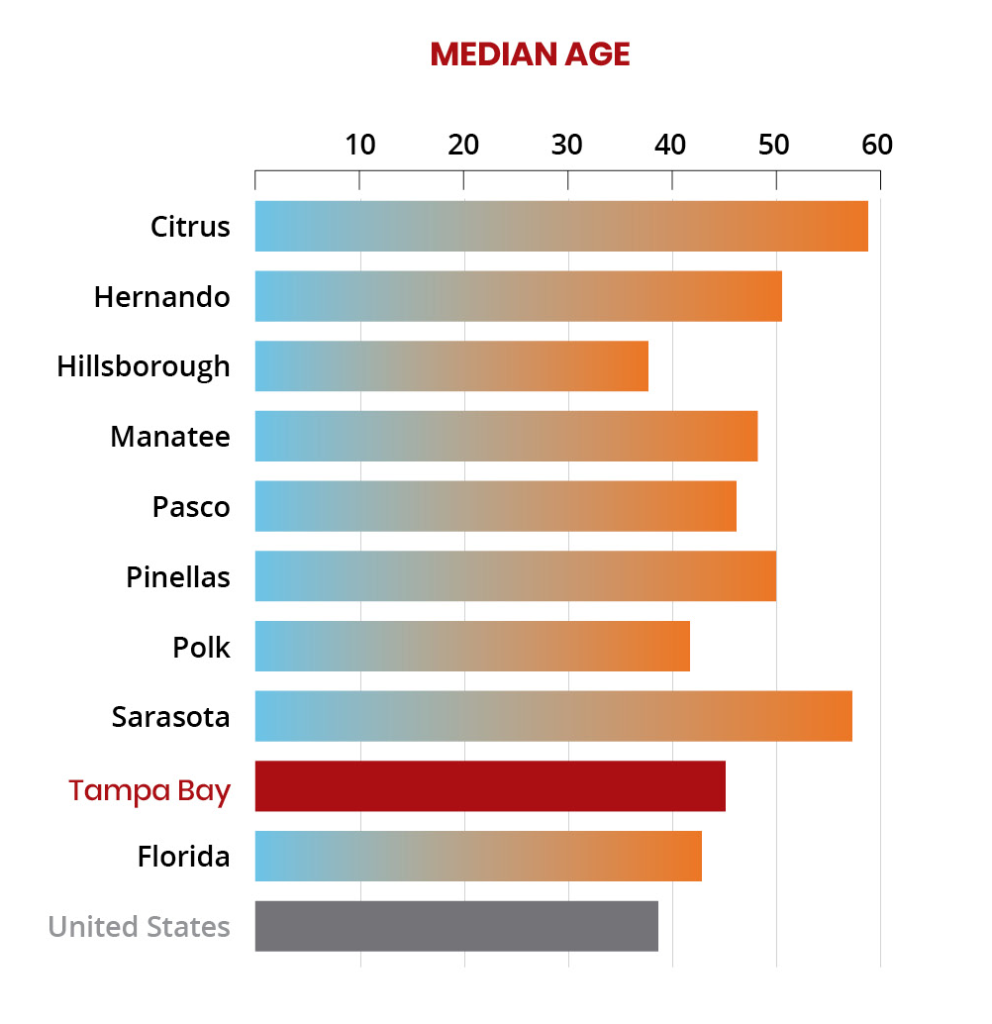
ESRI Business Analyst, 2021
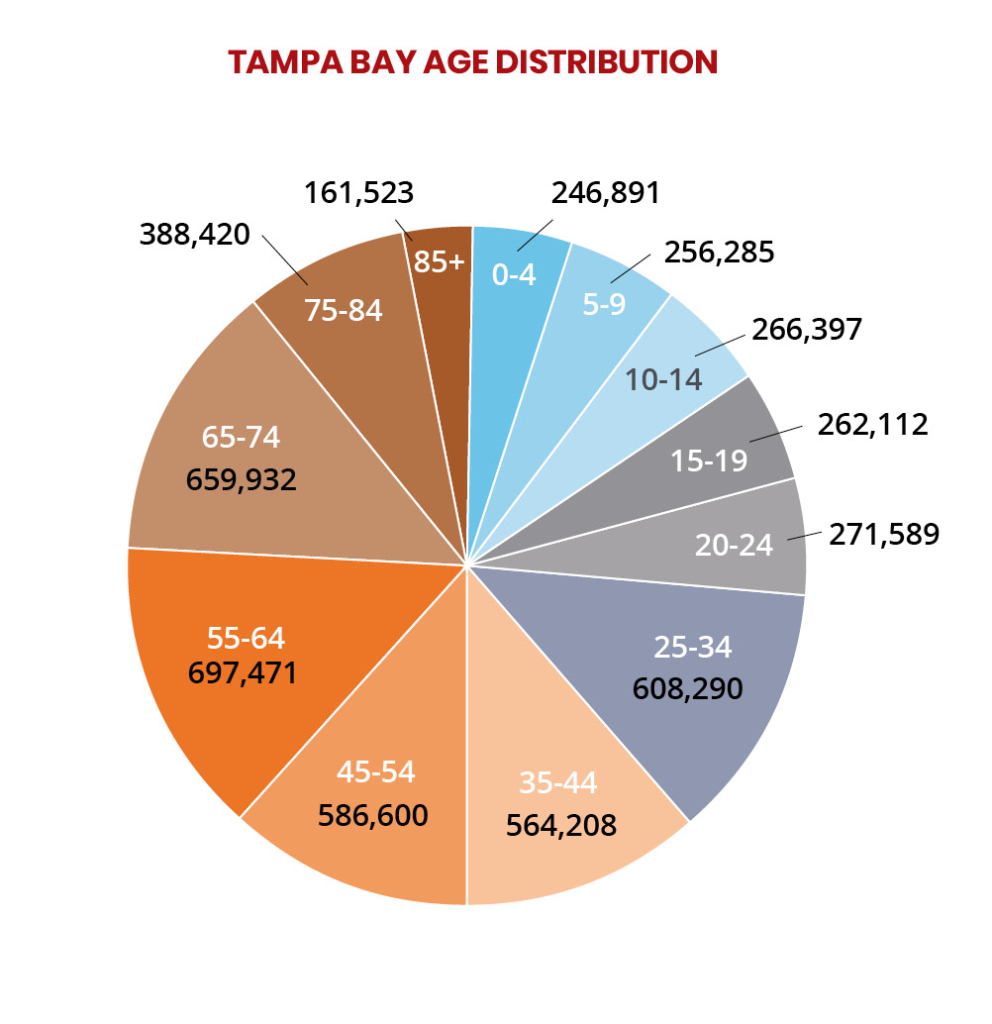
ESRI Business Analyst, 2021
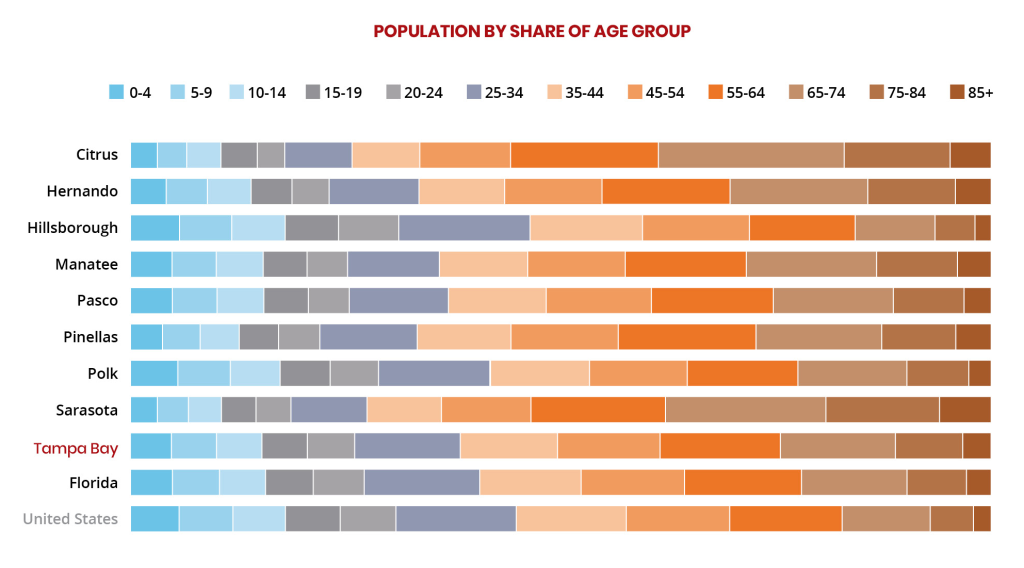
ESRI Business Analyst, 2021
Household Income
While Tampa Bay’s median household income of $ $62,819 is within reach of the median household income in Florida ($63,062), it’s falling increasingly short of the U.S. average ($69,717). The region’s highest median household income can be found in Sarasota County ($71,761) and its lowest in Citrus County ($47,197).
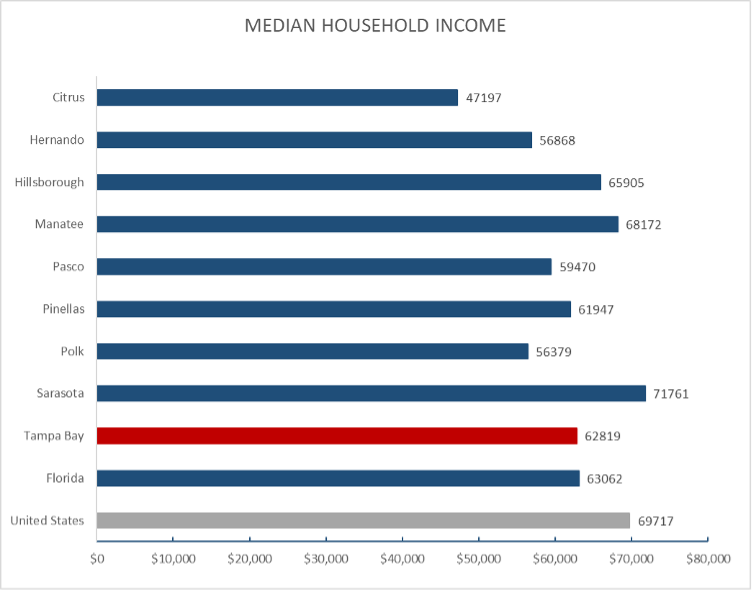
Source: U.S. Census Bureau, American Community Survey, 2021 1-Year Estimates
Employment
Healthcare, retail and hospitality continue to provide the largest share of employment opportunities for Tampa Bay residents, but professional services, construction, manufacturing, and finance and insurance are becoming stronger components of the regional economy. By occupation, office and administrative support, sales, and food service positions comprise 35.3 percent of the total employment in Tampa Bay, but this share has declined as employment in logistics, business and financial operations, and management has increased.
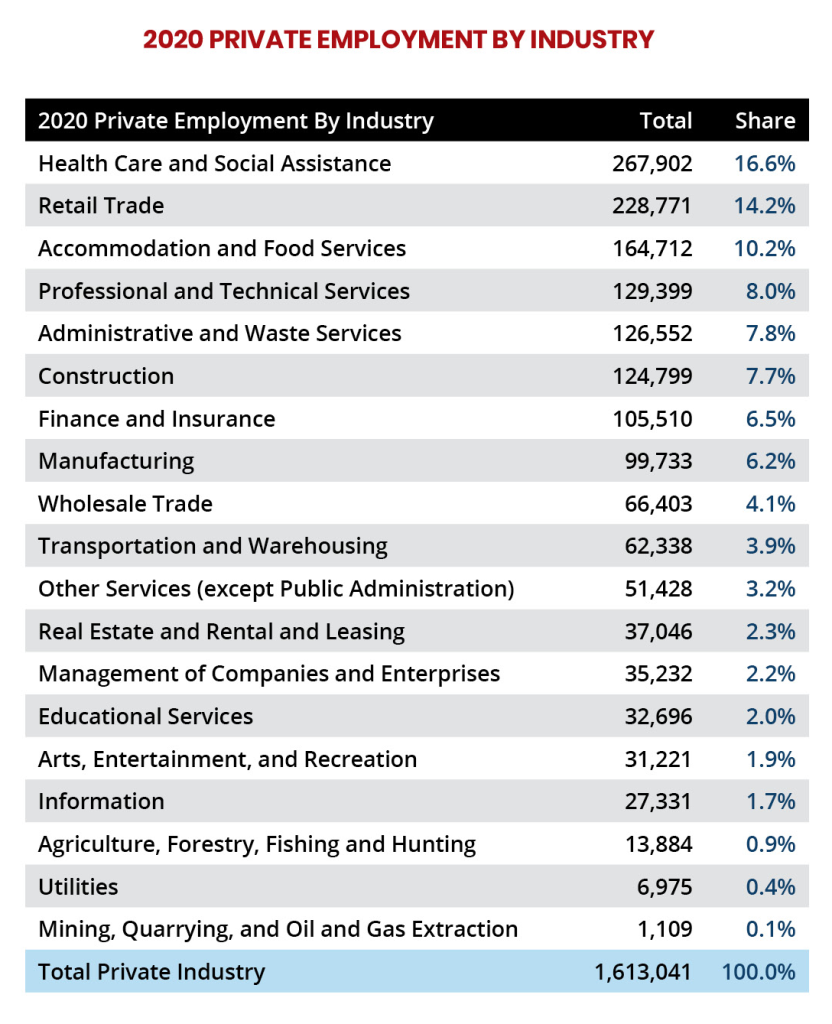
Bureau of Labor Statistics, 2020 Quarterly Census of Employment and Wages
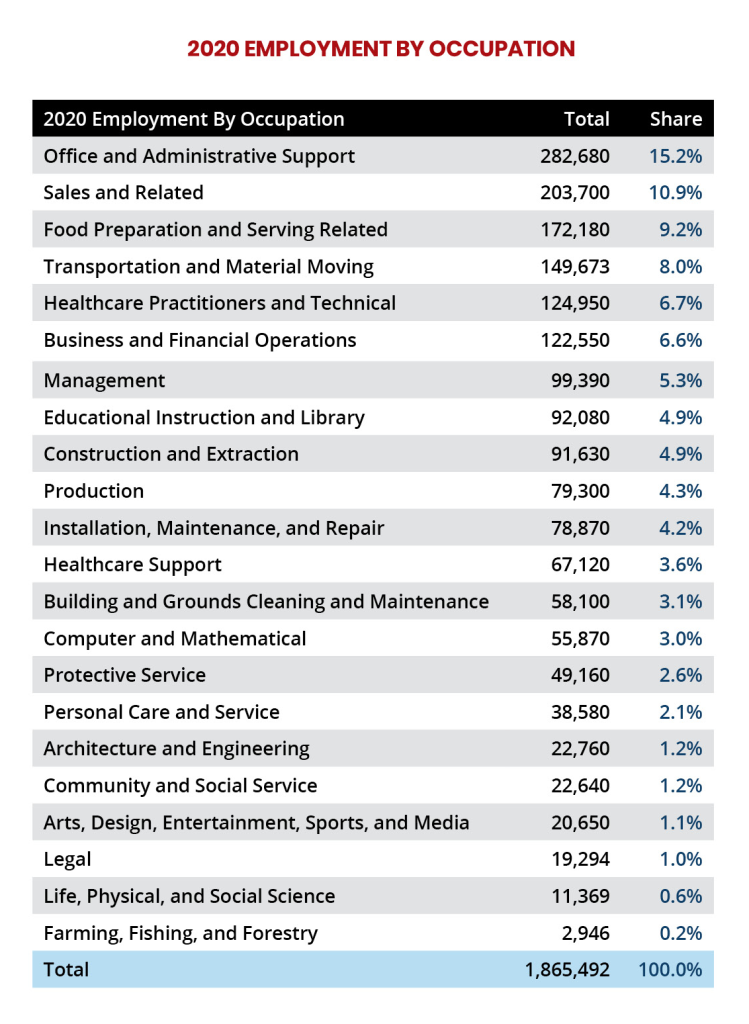
Bureau of Labor Statistics, 2020 Occupational Estimates Series